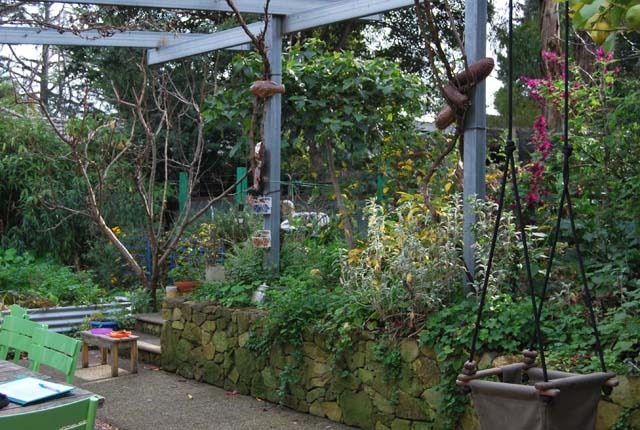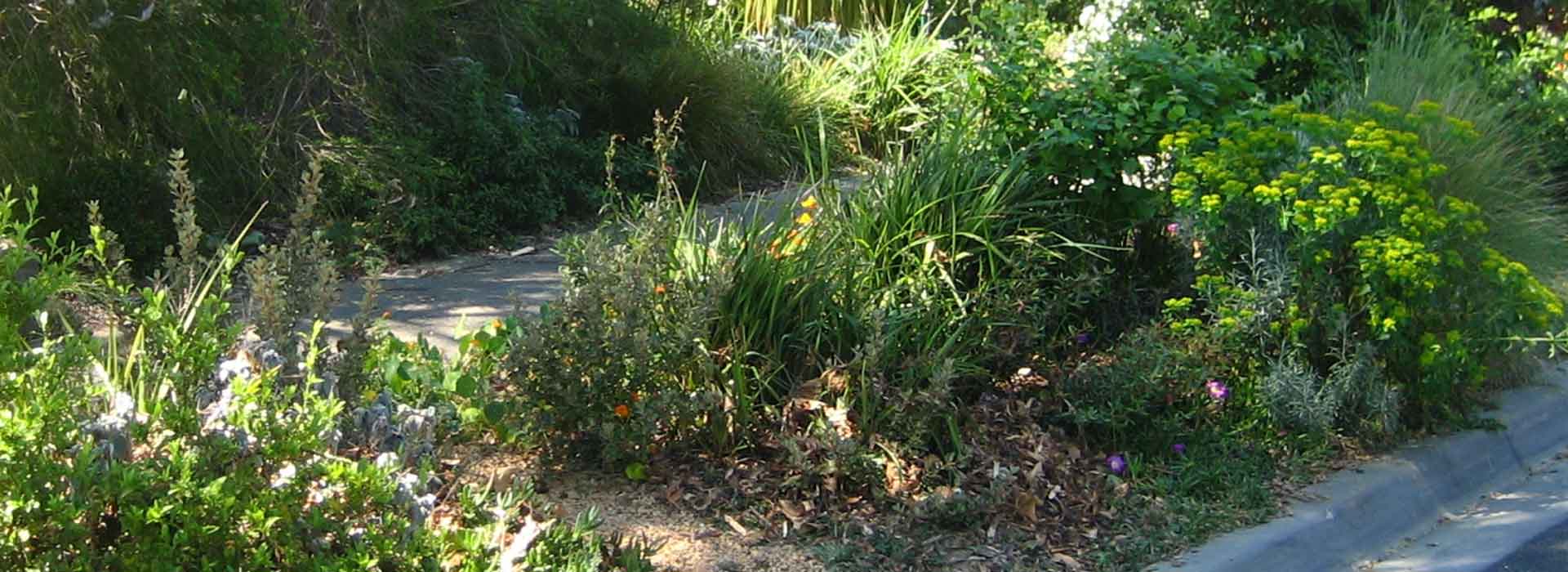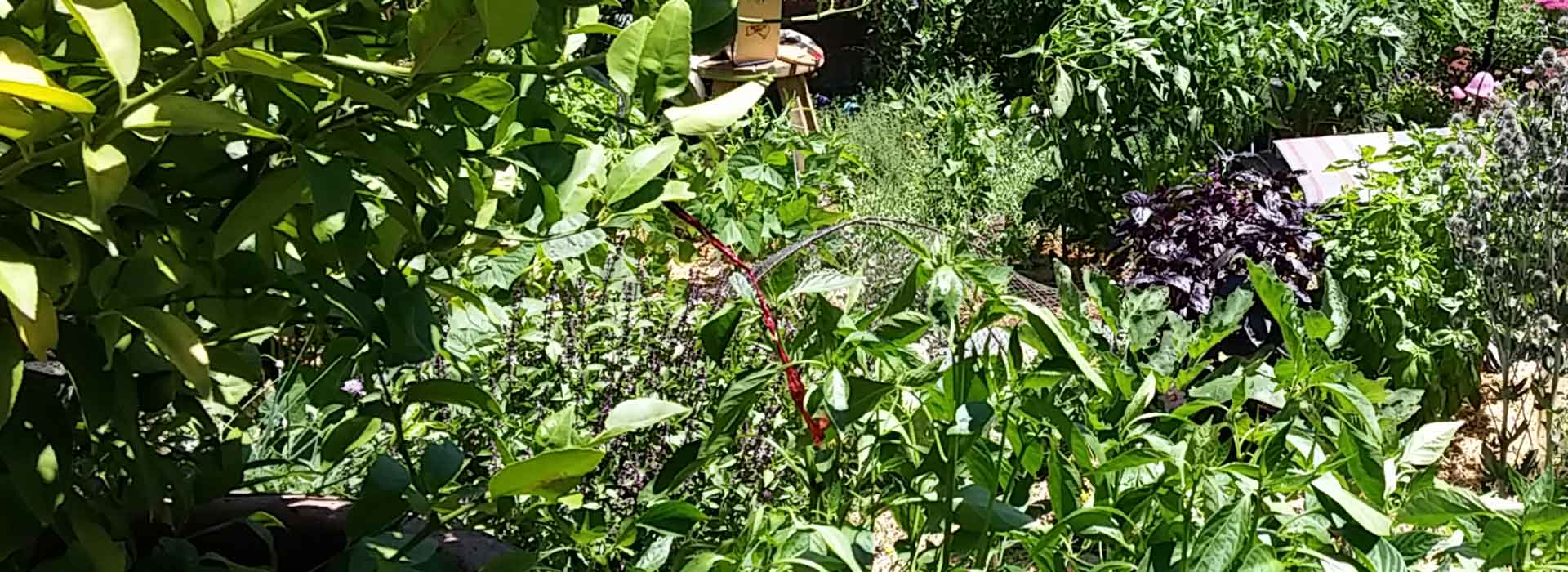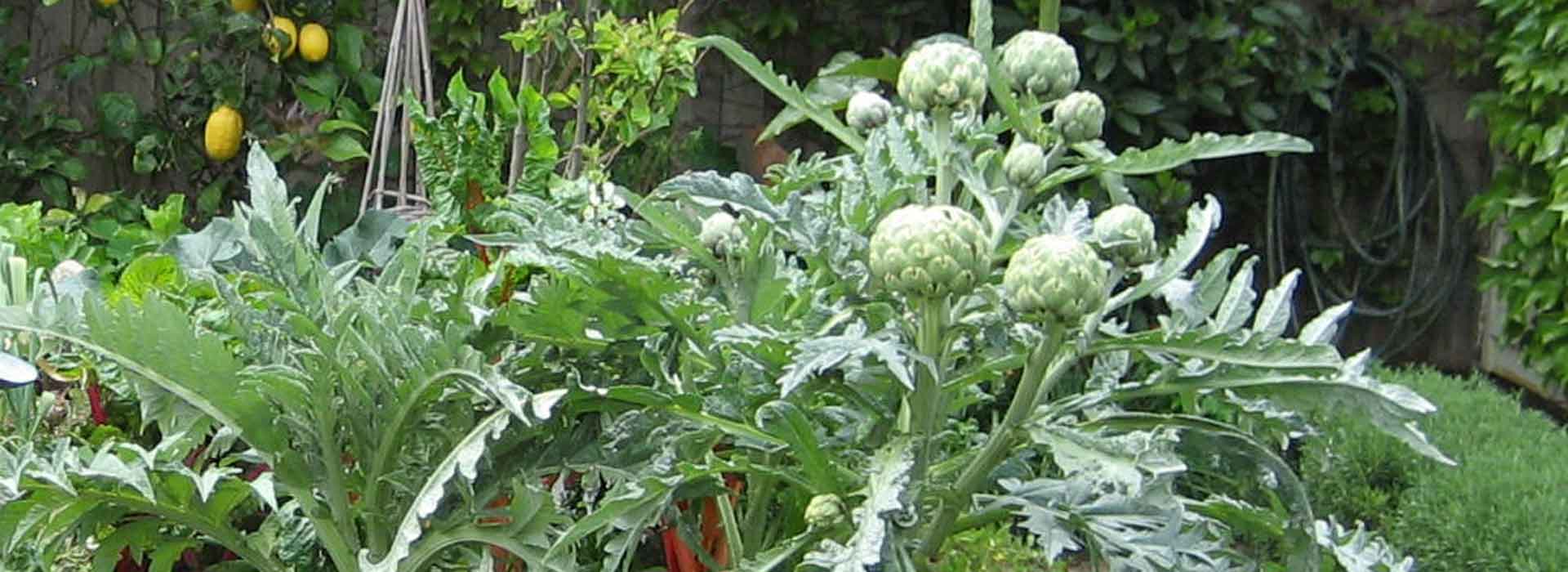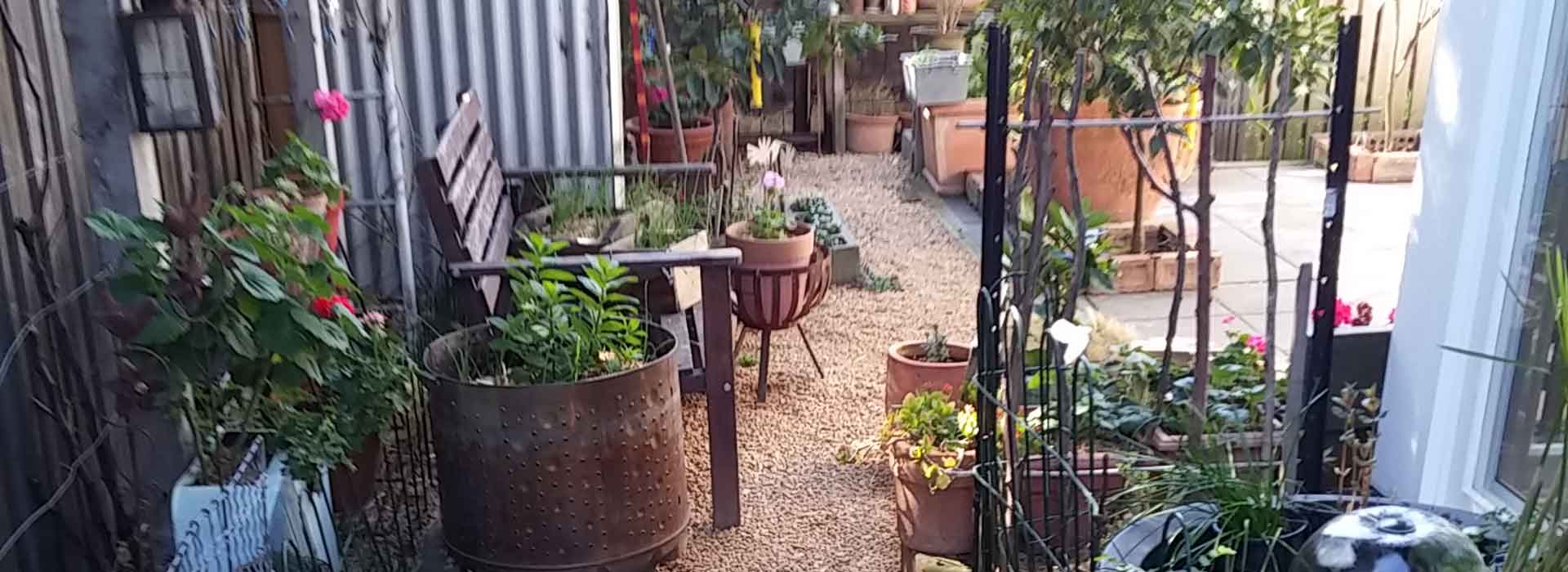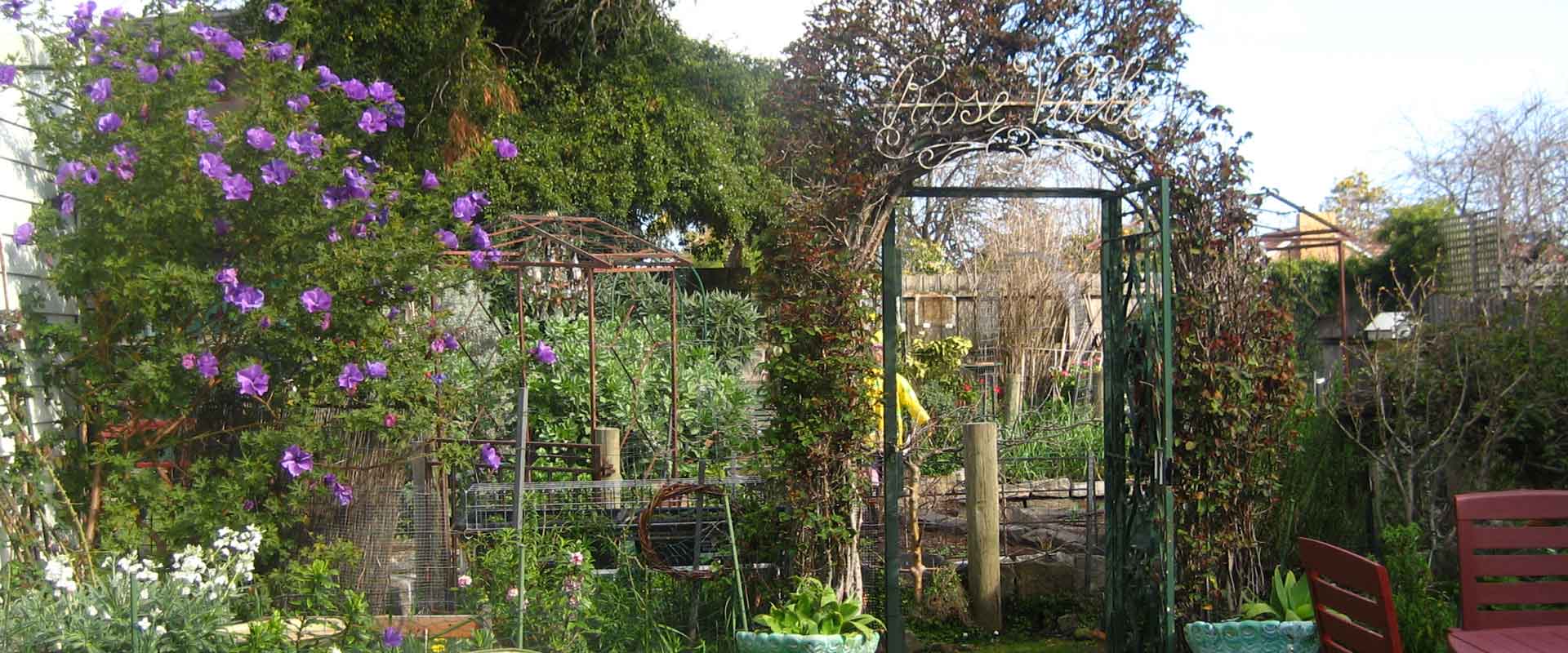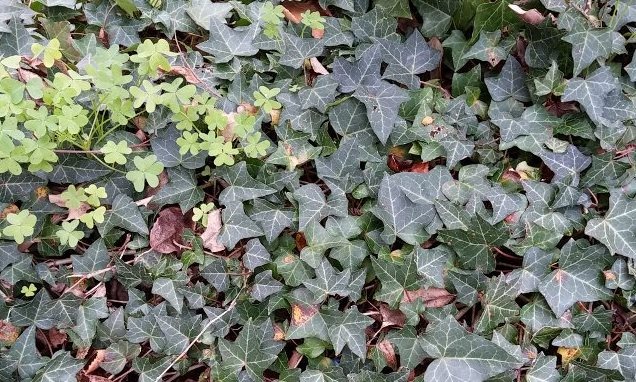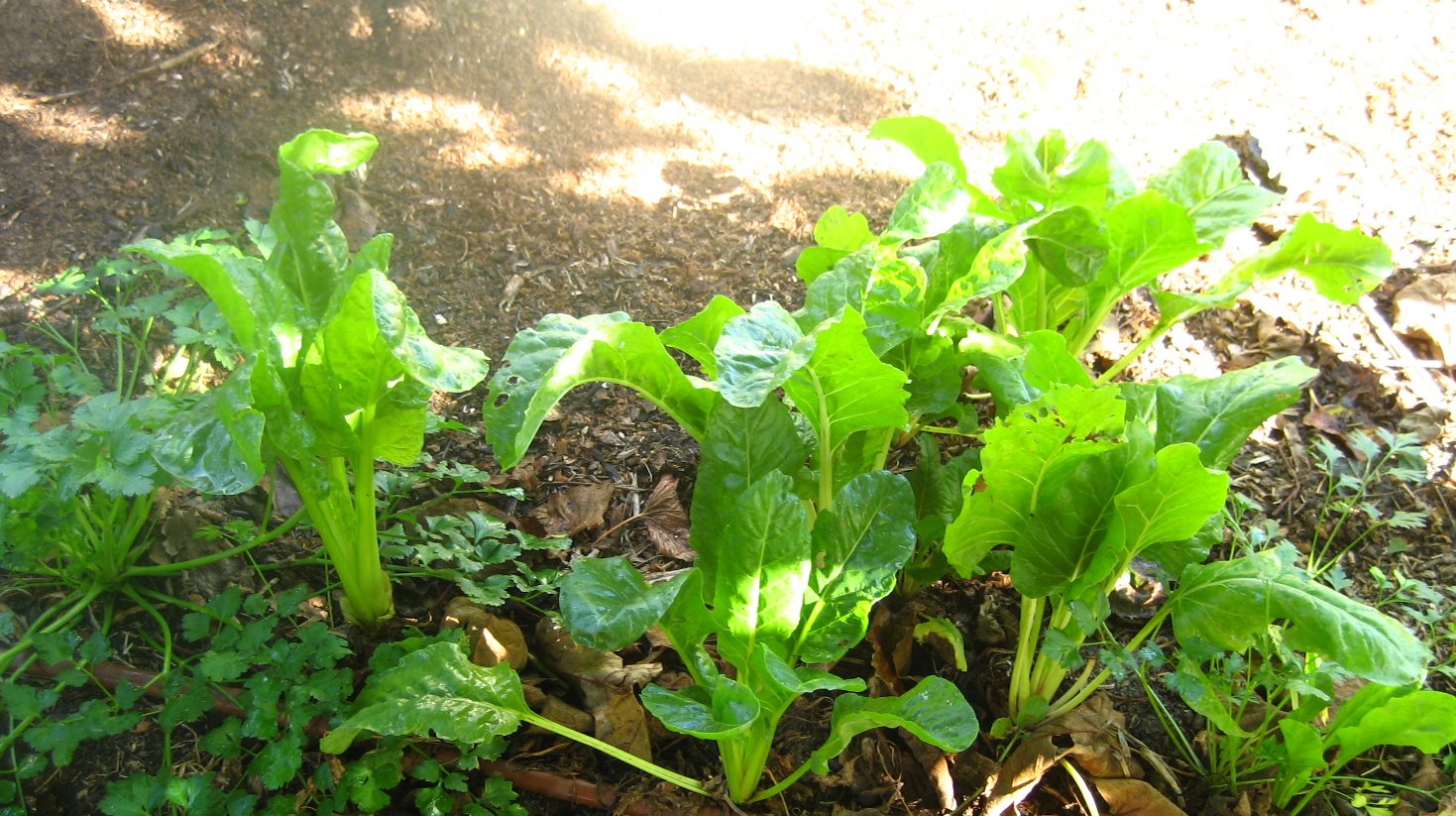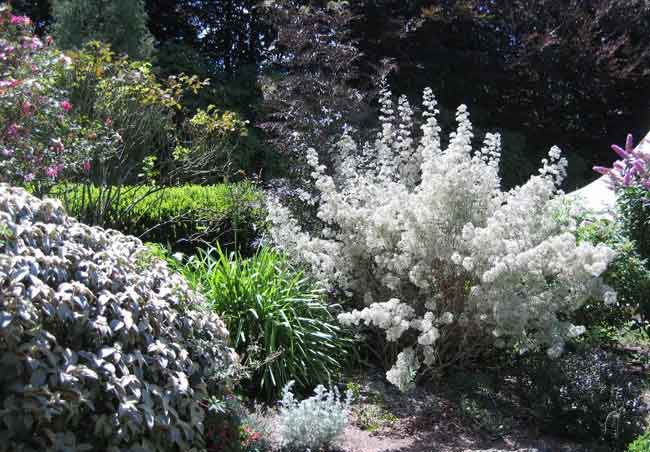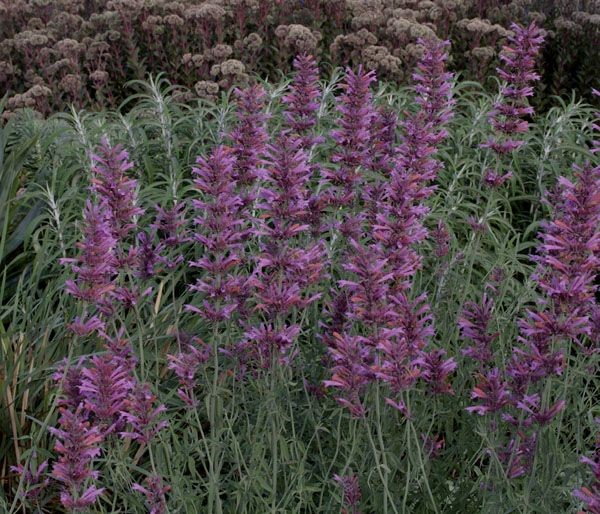An Eclectic Family Garden
This garden has evolved for just over 12 years since the owners, Mim and Paul, moved in. They run a landscape design and construction business, and the garden provided an opportunity to express creativity and experiment with ideas and plants. It started as a place to practice their trades, learn, play, entertain and be an example of how a sustainable and productive garden can also be beautiful and functional.
The arrival of their first child set them on a new trajectory. They ask "How do we expect our children to care for this planet if they have never had the opportunity to fall in love with the wonders that it holds?" So outdoor play, mud, dirt, chickens, bees, homemade pizza, flowers, bugs, and herbal potion are now essential aspects of garden activities.
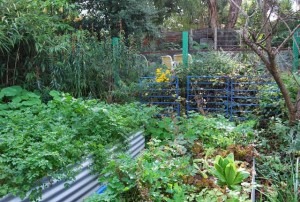 Part of their philosophy was "If you can eat it, it gets a place." They both love the satisfaction of eating home grown, and this has taken on an added value now their little people are starting to get involved – the carrots are a favourite and Mim and Paul are unlikely to get many ripe strawberries this year, but say it's ok because they understand that the temptation to pick them can be just a little too strong. Chickens and rooftop bees provide eggs and honey and amazing joy at watching children collect the eggs, feed the chickens and watch their dad climb onto the very rusty roof and check on HIS bees.
Part of their philosophy was "If you can eat it, it gets a place." They both love the satisfaction of eating home grown, and this has taken on an added value now their little people are starting to get involved – the carrots are a favourite and Mim and Paul are unlikely to get many ripe strawberries this year, but say it's ok because they understand that the temptation to pick them can be just a little too strong. Chickens and rooftop bees provide eggs and honey and amazing joy at watching children collect the eggs, feed the chickens and watch their dad climb onto the very rusty roof and check on HIS bees.
Over the first few years, Paul gradually completed the bulk of the major landscaping works. A small dry-stone wall around the lawn was the first project, using locally sourced Eltham mud-stone. He then poured a washed aggregate drive, front paths and back courtyard, which led to creating a pebble mosaic and paving.
Hidden down the side of the house are three tanks with 14,000-litre storage capacity and there are three more behind the shed. Plants with similar water requirements are grouped to avoid wasting water on plants that don’t need it. Only an area around the shed and the veggie patch get regular drinks. They constantly add organic matter from the compost to improve the soils' water holding capacity and are also careful to keep a thick layer of mulch to reduce evaporation. A drip irrigation system is used only through the hottest months. Tank water is also used to flush the toilet and is plumbed to the chickens and to the children’s mud pit.
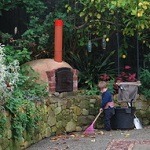 One of the Mim and Paul's favourite features of the garden is the adobe pizza oven, built in 2007. It has become a major focus and has been the basis of many fun nights with friends and family. An ornamental grape over a pergola now provides shade on the north side of the house in summer and an impressive autumn display.
One of the Mim and Paul's favourite features of the garden is the adobe pizza oven, built in 2007. It has become a major focus and has been the basis of many fun nights with friends and family. An ornamental grape over a pergola now provides shade on the north side of the house in summer and an impressive autumn display.
Salvias dominated Mim’s early planting. The Euphorbia characias ssp. wulfenii, Salvia semiatrata, Phlomis fruticosa and many others that are no longer in the garden, made up the first planting. Currently, ornamental productive plants are her focus. She has propagated many plants and many were swapped with gardening friends. Everywhere the owners go they collect plants. Consequently the garden is over planted with many plants dwarfed by excess competition, but that suits the owners - having plants perform a little under their peak allows a few more to be squeezed in. Every month, the garden is different. Even in the middle of winter there is something going on, and Mim has been careful in selecting plants that offer interest in foliage colour and texture as well as performance and productivity.
A list of the trees and permanent plants in the garden
| FRUIT TREES | VEGETABLES AND HERBS | EDIBLE PLANTS & VINES | |
|
|
|
|
Leanne's Permaculture Garden
Leanne’s garden, based on permaculture principles, was one of those opened recently in our Open Gardens and Tours program. She describes it as being a kind of album of the different garden crazes she has lived through. It has elements of formal and cottage ornamental planting, all white garden, scented garden, something in flower every month garden, native plant garden, sustainable veggie gardening and, of course, permaculture. Because the house was rebuilt about 15 years ago most of the garden, except for some trees, was demolished in the process. She says that she didn’t plan – just started digging and that things just worked out.
Front Garden
Leanne says she wanted something easily maintained so that it wouldn’t annoy her when her when she walked past all the weeds - something soothing and restful, to unwind going through the garden to the door. So it was ‘designed’ with the following factors in mind:
* It was not used for recreation, was south facing, so not the best for veggies.
* It couldn’t be watered easily from the tanks which at the back of the house, so the plants needed to be hardy.
* It was open to passers-by and slopes down to the front door.
It ended up predominantly native, heavily mulched with wood chips, planted with trees, strappy grasses and a few shrubs, a gravel path to the front door. After a while she found it a little bit boring, so added whimsical items and decorates for events such as Halloween, Christmas and Easter.
Several episodes of heavy rain yielded a pool at the front door, as water ran straight down the path. So a swale was constructed – a type of open channel running horizontally across the block allowing water to soak slowly into the ground It is filled with gumnuts, rather than pebbles to mimic a dry creek bed.
The nature strip is planted with a mixture of Australian native plants and other hardy species.
Back Garden
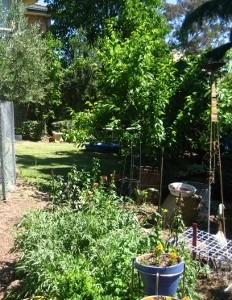 The back garden is divided into zones according to permaculture principles based on the amount and frequency of input. Vegetables are in Zone 1 with paths of wood chips or sawdust, which can be shovelled onto the beds as they break down. The poultry are in Zone 2 and the “Food Forest” of productive trees is Zone 3. The wild area at the back of this larger than average suburban block is Zone 4 because of lack of time to do much else with it. Zone 4 also has a bee hive, hosted on behalf of a permaculture bee keeping society.
The back garden is divided into zones according to permaculture principles based on the amount and frequency of input. Vegetables are in Zone 1 with paths of wood chips or sawdust, which can be shovelled onto the beds as they break down. The poultry are in Zone 2 and the “Food Forest” of productive trees is Zone 3. The wild area at the back of this larger than average suburban block is Zone 4 because of lack of time to do much else with it. Zone 4 also has a bee hive, hosted on behalf of a permaculture bee keeping society.
Three worm farms are set up under fruit trees so that the juices run straight out onto the trees. The compost bin is placed wherever compost is needed. The bin, when full, is moved elsewhere and the compost pile dug over occasionally until it can be planted up.
Permaculture concepts
Integrated pest management using beneficial insects to control the harmful ones. So there many plants with flowers that attract them – such as daisies and members of the carrot family: parsley, coriander and other umbelliferous varieties. Getting this to work requires resistance to pulling out seeding plants or weeds. It also requires resisting the urge to kill insects which may be providing food for the beneficial predators. And exception to this is in regard to snails. Although her ducks eat most of them, when seedlings are very young she uses Multiguard pellets inside exclusion cages (old bird cages) until plants are large enough to fend for themselves. She uses the capacity of a broad range of plantings which attract a variety of insects, animals and birds as an excuse for buying plants which she likes, but which have no obvious use. The biggest pests are possums and citrus gall wasp.
Chop and Drop - leaving tree prunings in piles so that they provide mulch for the trees and nutrients for the soil as they break down. Lawn clippings can be tossed over them as well and will not form big water resistant clumps because the twigs keep them a bit broken up.
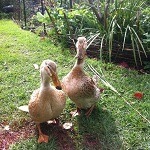 Using poultry as part of the permaculture system - chooks and ducks are able to free range under the trees when someone is around to supervise their safety. They clear up pests, such as codling moth, from under the apples, scratch around and reduce weeds while fertilising the ground. They also turn mulch into compost. They can be used in the veggie garden with similar results, but I find them a bit too enthusiastic with the weeding.
Using poultry as part of the permaculture system - chooks and ducks are able to free range under the trees when someone is around to supervise their safety. They clear up pests, such as codling moth, from under the apples, scratch around and reduce weeds while fertilising the ground. They also turn mulch into compost. They can be used in the veggie garden with similar results, but I find them a bit too enthusiastic with the weeding.
Edible plants
| Jerusalem Artichokes Lemon Cumquat Apple: Pinkabelle Sugarcane Almond Plum Pepper Bush Boysenberries White Sapote |
Asparagus Lime Mandarin x Crabapples Golden Hornet Persimmon Peach Pluots Lemon Myrtle Olives |
Rhubarb Makrut Apple: Granny Smith Banana Pomegranate Apricot Feijoas Strawberry Elderberry |
Globe Artichokes Lime Orange Apple: Red Delicious Avocado Cherry Medlar Quinces Grape Dragon Fruit |
An Inspiring Thornbury Garden
A garden created by Sharon and Craig Harris, recently opened to the public in Melbourne as part of SGA's Open Gardens and Tours program, attracted a large number of visitors. Here we share the description of the garden and the owner’s hints.
Sharon Harris, a landscaper designer, writes:
Our house has a very simple but wonderful history. We are only the second owners, the first were Italian migrants who built it in 1954. From the moment we saw it with its deep back garden, remnant chook shed, several old sheds, fruit trees, wood stove in the kitchen, cellar and extensive original veggie garden -the entire back garden- the potential of 3 Jones Street already existed within the walls and earth of the house. When I entered the front door, passed through the kitchen and saw the amazing stove, I knew this house was meant to be ours, but it wasn’t until I saw the size and layout of the back garden that I started feeling light headed, it was perfect. In that moment I could see the potential of the garden and a hint of the type of life we could have.
That was 18 years ago. The garden has changed over time, but not very much. If anything, it has moved gradually and gracefully towards its full potential as an oasis both visually and productively.
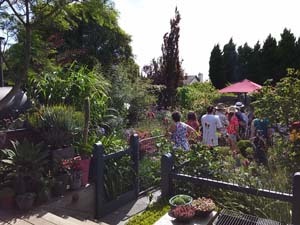 The fundamental productive and sustainable aspects of our garden have been in place from very early on. We reinstated the original chook shed within the first year, adding a large chook yard. The chooks provide us with eggs but they also provide the compost for the veggie garden and for mulching the rest of the garden. Essentially we get up to 2-3m3 of compost each year. Inside the chook shed we have two 1m x 1m x 1m compost bins. Around three times a year we rake out the chook shed which has been covered with pea straw, or the cut grasses from the nature strip each winter and all the clippings from the winter prune of the perennials in the garden, and fill the compost bins. The mixture of chook poo, carbon material, veggie scraps and cuttings from the garden create amazing, odour-free and friable compost. The design of the compost bin has a lot to do with the healthy development of the compost, with chicken wire in between two compost compartments. This way composting worms can move in between them. The chooks are fantastic pre-cursors to the compost as we throw much of the cut perennials on to the floor of the chook shed and the chooks scratch and sift through them looking for worms, insects etc, essentially starting the breakdown process.
The fundamental productive and sustainable aspects of our garden have been in place from very early on. We reinstated the original chook shed within the first year, adding a large chook yard. The chooks provide us with eggs but they also provide the compost for the veggie garden and for mulching the rest of the garden. Essentially we get up to 2-3m3 of compost each year. Inside the chook shed we have two 1m x 1m x 1m compost bins. Around three times a year we rake out the chook shed which has been covered with pea straw, or the cut grasses from the nature strip each winter and all the clippings from the winter prune of the perennials in the garden, and fill the compost bins. The mixture of chook poo, carbon material, veggie scraps and cuttings from the garden create amazing, odour-free and friable compost. The design of the compost bin has a lot to do with the healthy development of the compost, with chicken wire in between two compost compartments. This way composting worms can move in between them. The chooks are fantastic pre-cursors to the compost as we throw much of the cut perennials on to the floor of the chook shed and the chooks scratch and sift through them looking for worms, insects etc, essentially starting the breakdown process.
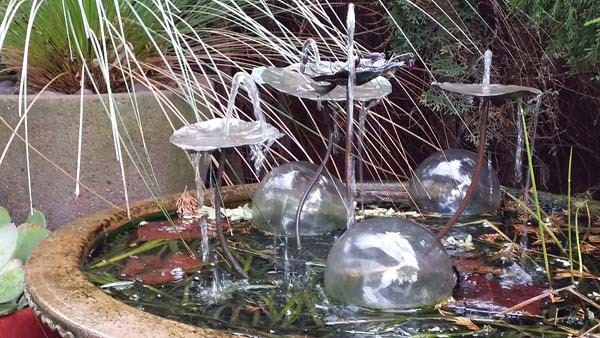 The veggie garden footprint has essentially remained the same since we moved in. There is often a mini battle each year between ornamental plants vs productive plants but the balance usually seems to be just right. The key to a good veggie garden for me is not to overplant any one type of veggie. This obviously depends on the type of vegetable, but by keeping the numbers small and sowing often we have a continual supply of salad vegetables in particular: examples of veggies that require this type of treatment are lettuces, spring onions, rocket, beetroot and radish. Herbs are an integral part of all our meals and in recent years they have started to dominate the tone of the veggie garden. Some herbs such as Thai Basil, Holy Basil, Sweet Basil and Coriander are continually sown during their growing months. Seed is often sown in punnets so that they don’t take up valuable space until ready to be planted out. Most of our veggies and herbs are grown from seed. We grow a variety of unusual herbs such as Perilla, Epazote, Turmeric and Curry Leaves. Many of the herbs such as the Coriander, Perilla and Epazote self seed. Mint is allowed to run riot as it is used heavily and is controlled by being pulled out where it is not wanted and given to the chooks.
The veggie garden footprint has essentially remained the same since we moved in. There is often a mini battle each year between ornamental plants vs productive plants but the balance usually seems to be just right. The key to a good veggie garden for me is not to overplant any one type of veggie. This obviously depends on the type of vegetable, but by keeping the numbers small and sowing often we have a continual supply of salad vegetables in particular: examples of veggies that require this type of treatment are lettuces, spring onions, rocket, beetroot and radish. Herbs are an integral part of all our meals and in recent years they have started to dominate the tone of the veggie garden. Some herbs such as Thai Basil, Holy Basil, Sweet Basil and Coriander are continually sown during their growing months. Seed is often sown in punnets so that they don’t take up valuable space until ready to be planted out. Most of our veggies and herbs are grown from seed. We grow a variety of unusual herbs such as Perilla, Epazote, Turmeric and Curry Leaves. Many of the herbs such as the Coriander, Perilla and Epazote self seed. Mint is allowed to run riot as it is used heavily and is controlled by being pulled out where it is not wanted and given to the chooks.
Fruit, particularly berries and citrus, are a very important part of our productive garden. I have been ruthless in the last couple of years, culling fruit trees that we have had challenges with, such as a wonderfully healthy Tahitian Lime that reliably dropped its fruit every year. Also, a very large fruiting Granny Smith Apple tree that the rats devoured every year no matter the control measure we put in place. I am learning what works for me in the garden, what plants take a lot of time for little gain and I have become more pragmatic about what I will use and what I think I will use. My cooking and the adventures I have with different styles and cuisines ultimately determines what I will and will not plant each season. I have tried galangal and ginger but they did not survive this past winter. Surprisingly the Turmeric does very well in a pot.
Perennial or permanent herb and edible plantings we have in the garden are:
| Herbs Kaffir Lime Curry Leaves Lemon Grass Turmeric Vietnamese Mint Lemon Balm Mint Garlic Chives Chives French Tarragon Rosemary Thyme Lemon Thyme Oregano Marjoram Sage Bay Tree |
Fruit Lemon trees x 2 Pear trees x 2 Youngberry Marionberry Raspberries Thornless Blackberry Strawberries Blueberries Kiwiberry Passionfruit Gooseberry Rhubarb Fig Trees x 2 Fingerlime |
To see other plants that interested people when the garden was open click here.
The most important additions to our garden in recent years are the bees. They have been here for about 18 months and have had a huge impact. This year I have had more raspberries than any other year and the garden overall feels more abundant and healthy. It is literally buzzing with sound. Their very nature is rhythmic and they have created a new and wonderful type of ‘clock’ in the garden. Their response to changes in weather, sun or cloud cover, rain or warmth, time of day, has worked its way into my consciousness and fundamentally affects how I see the garden and the way in which I work in it. Unless the bees are ‘bearding’ on the outside of the hive there only seem to be 20-30 around the outside of the hive at any one time. But in the height of spring and summer there are thousands of bees in the double hive, possibly up to 400,000. The wonderful fragrance of honey pervades the air on warm days.
The water bowls around the garden are utilized by the bees and are an absolute necessity.
Other sustainable aspects to our garden are:
- The three sets of water tanks totaling 13,000 litres.
- The entire house is covered in either the Ornamental Grape or Virginia Creeper. This means that the sun does not hit any of the walls and this fundamentally affects the temperature in the house. Conversely the windows in the back room allow all the winter sun into the house, as the vines are deciduous.
- We have a wood fire for heating and use a mixture of sustainably grown sugar gum and red gum, with the potash from the fire used to de-louse the chooks, add potash to the compost and/or garden to encourage flowering.
- The prunings from the loosely pleached Ornamental Pears in the driveway are kept and dried for use in the fire. There are solar panels on the roof.
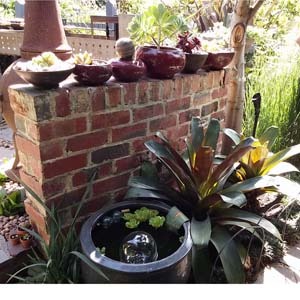 We live simply in a small house in suburbia but our garden provides us with a richness and earthiness that allows us to enjoy living simply but abundantly.
We live simply in a small house in suburbia but our garden provides us with a richness and earthiness that allows us to enjoy living simply but abundantly.
An SGA observation
An outstanding feature is the very large collection of low-water-requiring succulents in pots along the drive way, around the barbecue and along the outdoor deck. Such variety in colours and shapes!
Globe Artichoke
There are two unrelated plants called artichoke – Globe Artichokes – Cynara scolymus and Jerusalem Artichokes – Helianthus tuberosus. Different parts of the two plants are eaten. The Globe Artichoke is a member of the Asteraceae family, is a thistle and the flower bud is eaten. The Jerusalem Artichoke is a sunflower and the tuber is the edible part. As well as providing food, globe artichokes are attractive plants in the garden.
They originated in Mediterranean regions and Central Asia so will grow in many parts of Australia. Because they are extremely hardy and perennial, they are a useful addition to gardens where you want minimal chemical inputs. Warmer sub-tropical and tropical climates result in decreased flower size.
Growing to 1 – 1.5 metres in height and width, they make a stately feature and because they are perennial, a spot needs to be chosen that allows full advantage to be taken of the appearance of their graceful arching leaves. Buds grow on the ends of long flower stalks and may be green, bronze or purple according to the variety.
Planting schedule
Warm: August - November
Temperate: August - November
Cool to cold: September - November
Position
They prefer a sunny spot with plenty of space and well-drained soil. Because they produce 4 – 6 flower heads in their first year and 10 – 12 in the second year if grown from an existing plant, you will only need 1 or 2 plants per adult in the house. If growing from seed, flowers won't form until the second year. They can be grown in pots but make sure the pot is about 1 metre wide and at least 30 cm deep. Raised beds are perfect for them.
Soil and fertilising
They love – like most veggies – a rich, well-drained soil. If you see their outer leaves drooping, it will be because of waterlogging in winter or drying out in hot summers. Plenty of compost in the soil is important in preventing both extremes as it helps drainage in winter and retains moisture in summer. So making sure the soil is prepared properly at planting time is vital for successful growth in subsequent years.
Flowering and harvesting
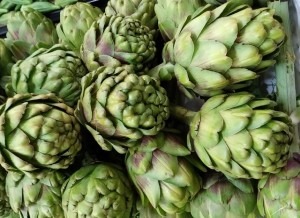 The first buds appear in early spring and continue through to early summer. Flower buds should be harvested before they open and when the stem below the bud is still pliable. That is, they should be in the shape of a globe (that's where they get their name from!). To pick the buds use a sharp knife to cut the stem leaving a few centimetres of stalk attached.
The first buds appear in early spring and continue through to early summer. Flower buds should be harvested before they open and when the stem below the bud is still pliable. That is, they should be in the shape of a globe (that's where they get their name from!). To pick the buds use a sharp knife to cut the stem leaving a few centimetres of stalk attached.
Pests and diseases
Crown rot can be an issue in a humid climate
Propagation
They may be grown from seed, shoots or suckers. Plants can be kept for several years and each year suckers will form at the base of the stems. They should be cut back to 30cm high in autumn. In winter they are pruned with the four strongest shoots left to flower the following spring.
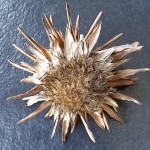 Use as decoration
Use as decoration
If flower heads are left on the plant and allowed to dry they are attractive additions to dried floral arrangements.
Cooking
Method 1
Cut about 2cm off the top of the artichoke head and remove the top cm or so of all the 'leaves'. Also remove excess stem, leaving 1 – 2 cm. Gently open out the 'leaves' a little and rinse in cold water. Place the whole head in a pot of water to which you have added some lemon juice and perhaps some garlic and a herb like bay leaf. Bring to boil, and simmer for about 30 minutes until the outer 'leaves' can be easily removed. Drain the head.
Both the lower portions of the outer leaves, the 'heart' and the top cm or so of the stem can be eaten. Try dipping the lower portions of the leaves in mayonnaise, or a vinaigrette prepared from oil, lemon juice with finely chopped herbs like parsley, then scraping them off with your teeth.
When the lower leaves have been removed, scoop out the fine, hairy portion which is inedible, and then the remaining heart can be eaten with the dip.
Method 2
http://www.davidlebovitz.com/2013/05/how-to-prepare-and-cook-artichokes/
Ingredients
6 - 8 artichoke heads
2 tablespoons olive oil
3 cloves garlic, peeled and thinly sliced
salt
red pepper flakes or black pepper
1/4 cup (60 ml) water or dry white wine
1 tablespoon fresh lemon juice
2 tablespoons finely chopped flat leaf parsley
Remove all but 2 cm of the artichoke stem and 3 cm of the head above where the stem meets the lower 'leaves'. Pull or cut off the lower leaves until the central portion is revealed. Scoop out the hairy centre of what is left and remove anything around the top of the stem that is tough so that you are left with the 'heart'. Place the 'hearts' in water with slices of lemon and some bay leaves.
Add oil to a pan with the garlic and heat slowly.
At the same time, working relatively quickly, drain the artichokes, towel dry them, and slice them about 1 cm thick or cut into wedges.
When the garlic starts to sizzle, add the artichoke slices, tossing them a few times, then season with salt and a generous pinch of red pepper flakes or a few turns of black pepper.
Cook for about 5 minutes, stirring occasionally, then add the water or wine and the lemon juice, and cover. Reduce the heat to low and cook for about 12 minutes or so, removing the lid and stirring a few times, until the artichokes are tender. They’re done when you can poke a paring knife into one and it meets no resistance.
Stir in the parsley. Cook for another minute or so to get rid of any excess liquid, then remove from heat. If you want to brown the artichokes further, add more olive oil and keep cooking the artichokes, stirring infrequently, until browned.
References
Blazey, C. Varkulevicus, J. (2006) The Australian Fruit and Vegetable Garden. The Diggers Club.
McFarlane A. (2001, reprinted 2008) Organic Vegetable Gardening. Australian Broadcasting Corporation.
Roses, Salvias and Sustainability
In Glen Waverley, Melbourne, a committed gardener has created what many might view as a fairly traditional garden – white picket fence and roses – that is lovingly cared for using sustainable practices. It is now a show garden which has been open to the public in SGA’s Open Gardens and Tours program and previously with Open Gardens Australia. It is also a destination for the Victorian Salvia Study Group and the Heritage Rose Society of Victoria. It is insect and bird friendly as well as containing many edible plants.
When Terry moved into her house 21 years ago, there was lawn in both front and back areas, the inevitable Hills Hoist, dead trees, blackberries, plum, lemon and apricot trees. The lemon tree, Japonica camellias, a rhododendron and a flowering Prunus remain with the lemon tree producing admirable 500 lemons per year. In the front garden all that remain are a Callistemon viminalis and a flowering cherry. A new apricot and other fruit trees have since been planted. Tall ornamental pear trees help provide summer shade on the north of the house and the lawn has disappeared.
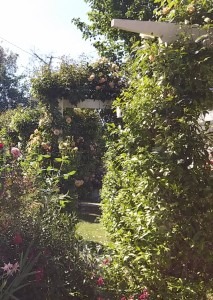 With a passion for roses, Terry has over 75 different varieties some of which climb romantically over arches. Others are dotted throughout in deep garden beds. Similarly over 65 different Salvias peep out from every available spare space. Together with various ground covering plants this means that there is very little bare earth. The salvias, in particular, make the garden attractive to a wide range of insects, including bees, praying mantis, ladybirds, hover flies, dragon and damsel flies, and parasitic wasps especially since no chemical sprays are used, allowing these beneficial insects to control the pests. The latter lay their eggs in the aphids and the larvae, when hatched out, eat the aphids from the inside. She avoids removing aphids from the roses since they provide the “food” for the wasps.
With a passion for roses, Terry has over 75 different varieties some of which climb romantically over arches. Others are dotted throughout in deep garden beds. Similarly over 65 different Salvias peep out from every available spare space. Together with various ground covering plants this means that there is very little bare earth. The salvias, in particular, make the garden attractive to a wide range of insects, including bees, praying mantis, ladybirds, hover flies, dragon and damsel flies, and parasitic wasps especially since no chemical sprays are used, allowing these beneficial insects to control the pests. The latter lay their eggs in the aphids and the larvae, when hatched out, eat the aphids from the inside. She avoids removing aphids from the roses since they provide the “food” for the wasps.
Having many insects in the garden means that birds have a ready meal. To further foster natural insect control, Terry has planted edible plants and herbs among the shrubs. She is particularly keen on Society Garlic Tulbaghia violacea which looks spectacular and produces edible leaves and flowers. It is reported to help deter aphids from roses and prevents scale and sooty mould on trees.
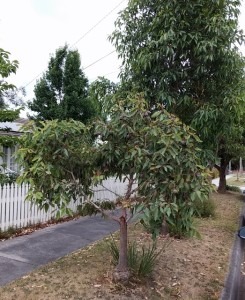 The nature strip boasts eucalypts and salvias too.
The nature strip boasts eucalypts and salvias too.
There are three water tanks, ranging in size from 2000 to 22,700 litres linked to a drip irrigation system. The largest tank is cleverly hidden in the back corner behind lattice and screening plants. To augment this water supply Terry uses grey water from the laundry and bathroom as well as run-off from the evaporative cooling system. Other materials, such as volcanic rocks and lawn clipping get recycled too. The use of permeable paving materials with stepping stones and minimal concrete helps with water penetration.
Fertility is augmented by application of aged sheep manure, pea straw mulch, compost in the planting holes for new plants. Terry also uses other fertilisers like Seamungus (made from fish, seaweed, manure and humic acid). It is registered as organic and is rated by SGA as having low environmental impact, Sudden Impact for roses and fruit trees (made from composted materials and boosted with minerals and rated by SGA as medium environmental impact) and potash.
It is clear that a very attractive garden that appeals to the conventional and well as the sustainable gardener can be created. It is a joy to both the owners and passers by
List of edible plants
| FRUIT TREES | VEGETABLES/HERBS | OTHER EDIBLES |
| ‘Cot N Candy,’ Apricot x Plum Nectarine Ballerina apple trees Granny Smith apple tree Lisbon Lemom Damson Plum Blood Orange Dwarf Orange Dwarf Peach Cumquat Ruby Grapefruit Feijoa Strawberry Guava Golden Peach Lemon and Lime Verbena Tamarillo Elderberry tree Columbian Lime tree Fig tree Pomegranate |
Society garlic
|
Bay tree Native raspberries Raspberries Strawberries Alpine Strawberries Thornless Blackberry Loganberry Rhubarb Violets |
A Productive Townhouse Garden
Would you think it is possible to grow 23 different fruiting trees and shrubs, have chickens and bees in a townhouse garden on a standard dual occupancy block? Well, that is exactly what Patricia has achieved in 9 years. Including the strip along one side of the driveway, the productive area is about 72 square metres. And all without chemical use. 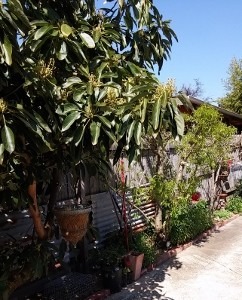
Clever planning has been the key to productivity in this attractive garden. Along the sunny driveway are a range of vegetables – lettuce, peas, garlic and brassicas and herbs. The standout feature is an avocado tree laden with fruit which satisfies the household for the whole year. In a garden bed near the front door grow fruit trees, some planted as duos (2 similar trees about 20 cm apart) – Williams and Nashi pears, an apricot and peach – mixed with herbs and decorative species. The close planting limits tree size, aids cross pollination and enhances fruit production. Other fruit trees and shrubs including almond, Granny Smith apple, Moorpark apricot, Hass avocado, bay tree, blood orange, blueberry, black Genoa fig, sultana grape, grapefruit, macadamia, olive, two plum trees and pomegranate, grow in various locations around the outside of the house.
Full sun access on the roof at the front of the house creates an excellent location for the solar panels.
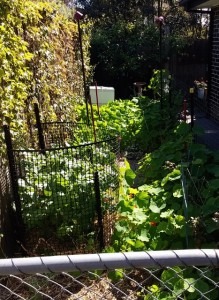 Behind the garage, in the shade are two large compost bays. Along the back fence are raised beds with plants that don’t mind shade in winter - strawberries, leafy greens and potatoes - and those that are dormant then such as asparagus. The area receives sun in summer so can then be used for other vegetables. A very productive beehive sits near the back fence. It is managed by the hive owner who shares the honey with Patricia – last year she received 10 kg. Fortunately, the queen is not aggressive so the bees don't seem to be anxious to sting - Patricia has never been stung despite carrying out weeding and planting near the hive and walking past it regularly.
Behind the garage, in the shade are two large compost bays. Along the back fence are raised beds with plants that don’t mind shade in winter - strawberries, leafy greens and potatoes - and those that are dormant then such as asparagus. The area receives sun in summer so can then be used for other vegetables. A very productive beehive sits near the back fence. It is managed by the hive owner who shares the honey with Patricia – last year she received 10 kg. Fortunately, the queen is not aggressive so the bees don't seem to be anxious to sting - Patricia has never been stung despite carrying out weeding and planting near the hive and walking past it regularly.
Along the western fence is the chicken run – very long and about 1 metre wide – housing four bantams which don’t require a large space to roam. They produce enough eggs for the family and when they lay fewer as they age, a new hen is added. On a small patio nearby are a range of citrus – several types of lemon, mandarin and blood orange growing in large terracotta pots.
Pests are dealt with by companion planting such as marigolds with tomatoes, and by mixing flowering plants like nasturtiums and those with aromatic leaves such as chives between the vegetables. Another strategy is to plant brassicas and greens later in the season when many pests don’t seem to be so active.
Scattered around the garden is an array of re-purposed items, often gleaned from hard rubbish collections. A wire mattress frame serves as a trellis for peas and metal containers double as pots. Various wire structures serve to protect plants from birds and other found objects contribute whimsy and interest.
Fertility is maintained by compost and organic chicken and cow manure mulched with organic sugar cane two or three times per year.
The nature strip is also lush with a mixture of Australian native plants like dwarf acacia, pig face and correa and others that are hardy, such as rosemary, so that no extra watering is required.
Altogether a healthy, productive garden which does considerable benefit to the planet and little harm.
Dedication to Productivity and Recycling
The first in SGA's series of Sustainable Open Gardens and Tours, Zofia's garden in Mt. Waverley, is an examplar of productivity and aesthetics with low environmental impact and financial cost. Zofia is very resourceful, scouring hard rubbish collections and demolition sites for materials she can use to create lovely design, lush growth and inviting spaces for relaxing. When she moved into the house, the garden had many established trees and shrubs around the edges, and into this framework she has achieved her miracle of recycling and productivity.
Garden arches, old gates and wire mattress bases form supports for climbers; windows, planks and other materials salvaged from a house being demolished next door have made the chook house. In fact, most of the infrastructure is made from discarded items. “I love the aesthetic of re-using found materials in different ways – saving them from being destroyed and giving them a new life (I also save a lot of money). For example, strawberry beds made from old council recycling bins,” she said.
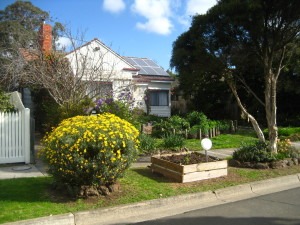 She has also made a no dig garden bed from wooden pallets and other materials she found on hard rubbish. This she has put on her nature strip which gets a good amount of sun and she has planted a neighbourhood herb garden between the yellow flowering Tagetes. “It’s a way of sharing with neighbours and building community,” she said.
She has also made a no dig garden bed from wooden pallets and other materials she found on hard rubbish. This she has put on her nature strip which gets a good amount of sun and she has planted a neighbourhood herb garden between the yellow flowering Tagetes. “It’s a way of sharing with neighbours and building community,” she said.
Her front garden has other no dig beds formed from salvaged posts and wire as edging with straw, horse manure and compost. They are filled with vegetables including peas, beetroot, spinach, broccoli and potatoes; coriander and dill have self-sown among the other plants. When asked how she accesses so much compost, she said that it all comes from her garden – from the many trees and shrubs which shed leaves and flowers.
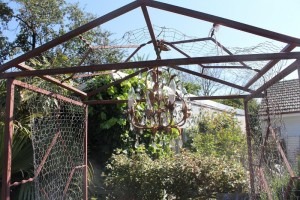 Around the back is a yard full of greenery and objects of interest. One of the first things you notice is a chandelier, which Zophia must have found, hanging from a rusty arch.
Around the back is a yard full of greenery and objects of interest. One of the first things you notice is a chandelier, which Zophia must have found, hanging from a rusty arch.
The vegetable patch is a mandala with 6 sections each edged in bluestone salvaged from a renovation up the street. The whole area is fenced with found materials to keep the chickens out and to support the espaliered fruit trees – mostly heritage apples, including snow apple and Cox’s Orange Pippin - along the fence of the patch. Inside is a very healthy looking bed of garlic – soon to be ready for harvest, which will give her a year’s supply. There are also raspberries, broad beans and a blackcurrant and beds with mustard to inhibit nematodes which could attack the next planting of tomatoes. Her eight chickens lay eggs, provide manure and rework the compost.
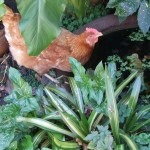 Chickens are just one aspect of Zofia’s sustainable way of gardening. She also harvests water from every gutter on the property. She has three tanks with a total capacity of 10,000 litres. Solar panels generate her electricity; an old laundry tub forms a worm farm and she has a bee hive for pollination and honey.
Chickens are just one aspect of Zofia’s sustainable way of gardening. She also harvests water from every gutter on the property. She has three tanks with a total capacity of 10,000 litres. Solar panels generate her electricity; an old laundry tub forms a worm farm and she has a bee hive for pollination and honey.
Then, of course, there are all the edible plants – fruit trees (such as apricot, avocado, nectarine, lemon and peach) and the extensive vegetable garden. She lives off the produce in her garden, doesn’t have to buy any vegetables and has plenty of eggs. “One year I decided to measure all the produce I harvested from my garden in a three-month period (March to June) and it came to 39 kilos,” she says.
Not all the plants in the garden are edible. There are large hydrangeas against a fence and Acanthus which Zophia says provide cool shelter for the chooks in summer. And a wide variety of ground covers add to the lush appearance and serve as green mulch.
There are two ponds which are home to edible water plants and frogs as well as beneficial insects. How did she get the frogs? “I put the ponds in, they just came,” she says. There is also space for seed propagation - in a shade house at the back of the garden next to the chook house.
Fences are decorated in unusual ways – hanging on one stretch are old bird cages (some of which are used from time to time to cover seedlings and prevent blackbirds from digging them up). Then there are rusty bed springs adorning another spot. She tells a sweet story about them: ”A little bird sat on the bed springs and must have been eating fig. Did a little deposit and there was a seed in that little deposit. Now I’m espaliering that fig tree.”
When asked of her experience with possums, a pest to many gardeners in Melbourne, Zofia said “Treed areas have possums. In this area, so many of the houses have been pulled down and so many trees have been pulled down too, possums don’t bother me at all.”
Zofia belongs to a Harvest Share Swap group which she says is “a great place to share abundant harvests as well as gardening ideas.”
Growing Edibles all Year Round
Through careful fruit and vegetable selection, it's possible to have edibles in your garden all year round. Karen Sutherland from Edible Eden Design, gives some valuable suggestions in this video.
Reducing Weed Spread
"Garden plants are the biggest source of weeds in this country totalling 70% of Australia’s combined agricultural, noxious and natural ecosystem weeds"1. A more recent review of the literature and a survey of seed experts in Australia has revealed that the ornamental plant trade and vehicle movement are the major pathways for weed spread2. Thus the garden and nursery industry as well as home gardeners must take the blame for this problem which results in inhibition or even elimination of native plants and other species in natural areas. What can gardeners do to avoid this?
An environmental weed may be one that we recognise as a common garden weed, such as White Clover Trifolium repens or Soursob Oxalis pescapre. They can also be ornamental plants introduced from overseas, or Australian plants originating from outside the 'local area,' such as Bluebell Creeper Sollya hetrophylla from WA or Sweet Pittosporum Pittosporum undulatum from East Gippsland.
Volunteers and governments dedicate enormous resources to controlling invasive plants that destroy biodiversity in National Parks and Reserves. Weeds in the garden create a chore that needs to be attended to in order to keep our ornamental plants healthy and to make the garden more attractive. When plants become weeds in our bushland and waterways, however, they pose a much more serious problem.
Environmental weeds can be of any plant type: annuals, perennial herbs, shrubs, vines, trees, aquatics or succulents. Due to their ability to survive and spread over a wide range of conditions these plant species are identified and classed as environmental weeds.
Some of the plants that we grow in our gardens are able to propagate themselves readily by seeds, cuttings or offshoots. Examples include Agapanthus that spreads by seed, the berries from Cotoneaster spread by birds, and Ivy that can take root from a small piece of stem.
When they spread to natural areas, environmental weeds compete with the naturally occurring local vegetation for light, nutrients, water and space, often reducing its ability to regenerate. Their impacts on ecosystems can include reduced biodiversity, loss of food sources and shelter (for animals and insects) and even choking of rivers as has occurred with willows Salix spp.
What can we do?
Don't plant weedy species
When deciding on what plant species to include in your home gardens please consider using plants without potential for weediness, especially if you live near areas of bushland, coast, rivers or creeks. There are many excellent alternatives to choose from and natural plant and animal communities may benefit from your actions. If you are not sure, ask at a garden centre that has SGA certification, contact your local council for information on weeds that are a problem in your area or visit http://www.environment.gov.au/biodiversity/invasive/weeds/
Use strategies to prevent spread
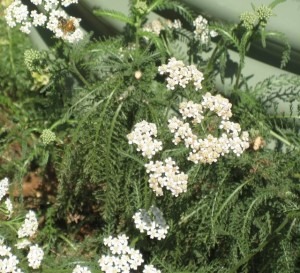 When we move house, we are often confronted with existing plants with weed potential. But we might not want to rip them out, especially if they are attractive. And as we look for natural methods of pest control, we might want to attract beneficial insects into the garden by planting species that are known weeds in different parts of Australia e.g. Queen Anne's lace Daucus caryota, yarrow Achillea filipendula and fennel Foeniculum vulgare. However, it is possible to have the benefits without the disadvantages:
When we move house, we are often confronted with existing plants with weed potential. But we might not want to rip them out, especially if they are attractive. And as we look for natural methods of pest control, we might want to attract beneficial insects into the garden by planting species that are known weeds in different parts of Australia e.g. Queen Anne's lace Daucus caryota, yarrow Achillea filipendula and fennel Foeniculum vulgare. However, it is possible to have the benefits without the disadvantages:
- Choose sterile forms of species that set seed
- Consider replacing any environmental weeds in your garden with local plants or exotic plants that are not invasive
- Cut off old flower heads before they form berries or seedpods
- Contain self-seeding plants, such as coriander and fennel to a specific area of the garden
- Restrict the root growth of creeping or suckering species with root barriers i.e. metal sheeting dug 30 cm into the ground
- Grow aggressive creeping species, such as yarrow, in pots which have been lined with 2 layers of shade mesh or geofabric so that stolons and roots cannot escape
- Dispose of garden waste by composting or in the green waste collection
- Put particularly resistant species such as kikuyu in sealed plastic bags in the household garbage
- Avoid dumping weeds and prunings on vacant land, in waterways or the bush
- If you see someone dumping garden waste report it to your council
- Avoid transporting seeds or Australian plant material interstate or overseas, where it may become an environmental weed.
References
1. Groves, R H, Boden, R, Lonsdale, W M. (2005) Jumping the garden fence: Invasive Garden Plants in Australia and their environmental and agricultural impacts. WWF-Australia.
2. Coleman, M J, Sindel, B M. van der Meulen, A W, Reeve, I J. (2011) The Risks Associated with Weed Spread in Australia and Implications for Natural Areas. Natural Areas Journal, 31 (4), 368-376.
Growing in the shade
Can you produce edibles growing in the shade? Of course you can, even when the fruit trees create a lot of shade. Karen Sutherland has used every spot on her small property to its full potential. She tells us her approach in this video.
https://www.youtube.com/watch?v=YaCiNizT_BM
Companion Planting in a Small Productive Urban Garden
Companion planting in a small productive urban garden of fruit and vegetables makes it possible to avoid using pesticides. Just plant densely with a large variety of flowering and scented plants that attract beneficial insects and repel those you don't want. Such companion planting reduces pesticide use making produce healthier for you to eat, saves money and looks attractive. Angelo Eliades explains in this video.
https://www.youtube.com/watch?v=iX9mQNswJrw
Why Sustainable Gardening?
Some people might ask why SGA talks about sustainable gardening rather than just gardening.
The fact is that horticulture in the hands of home gardeners, gardening professionals, nurseries and garden retail centres can have wide reaching deleterious impacts on the natural environment far from urban gardens. SGA's goal is to help you prevent these impacts and, at the same time, make your gardens joyous, healthy and productive places.
Here are some things sustainable gardening can do.Read more
More Sharon's garden plants
Sharon's garden in Thornbury was massed with a variety of plants. Many visitors asked for their names. Here are some of them.
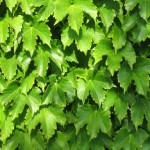
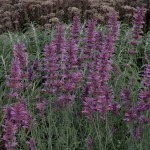
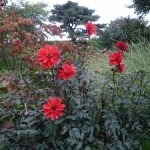
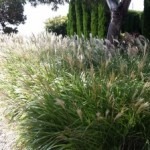
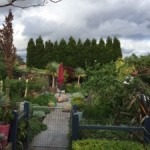
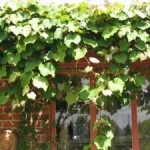
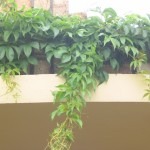
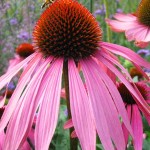
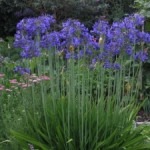
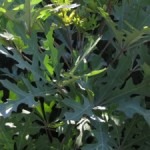
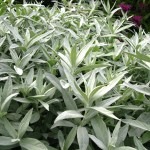
Upcycled Containers for the Garden
If you like avoiding waste, being practical and saving money, then upcycling is for you. With a little imagination and a keen eye you can make interesting substitutes for pots in the garden. If you rent rather than own your garden, container growing is practical, avoids discussion with the landlord and allows you to take your garden with you when you move. Here are some examples, including those sent by our readers as part of a recycling photo competition earlier in 2013.
Plumbing items
We are probably all familiar with old baths used as planters and ponds, but think about pipes of all sorts such as those in the banner image above.
Household containers
Crockery and glassware have a variety of uses. They can be filled with water for birds if you make sure there is something they can grip with their feet. Porcelain containers can be given drainage holes if you drill carefully. Terracotta or ceramics can be used without drainage holes for plants like water chestnuts which need to be flooded when they mature.
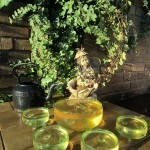

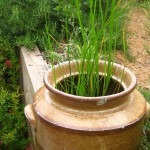
Kitchenware
Kettles, aluminium cans, mugs, pots, kettles, teapots and plastic or cardboard drink bottles have a variety of uses including mini-greenhouses, planters and plant guards. Just remember drainage holes for planters.
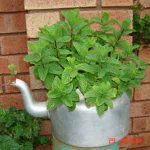
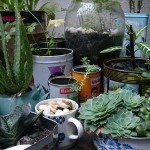
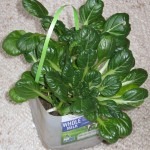
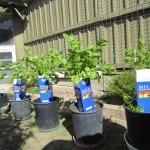
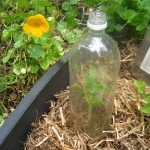
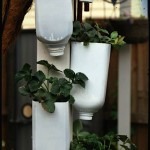

 Polystyrene fruit boxes and toilet roll tubes
Polystyrene fruit boxes and toilet roll tubes
If the holes in the base are covered with something like shade cloth to hold soil in place they make good planters. They can also be easily converted into wicking beds by lining with strong plastic, adding scoria, a layer of shade cloth and then soil. The cardboard from toilet rolls make convenient biodegradable pots for seedlings.
Vehicle parts
Surprisingly trucks and cars provide some interesting material. Springs can hold smaller pots, wheel rims convert into pots and hub cabs create an interesting support for climbers.
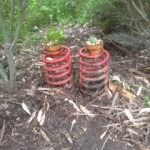
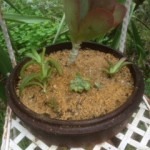
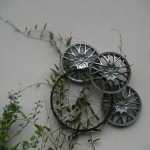
Garden gear
Wheelbarrows, watering cans and buckets which have developed rust or holes and old garden boots deserve upcycling too.
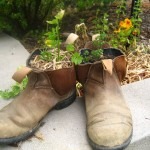
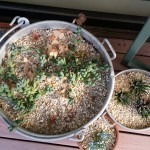
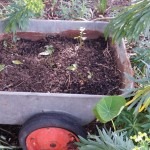
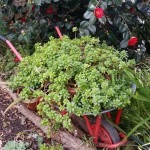
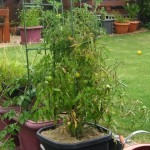
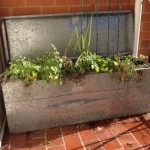
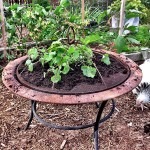 Other ideas
Other ideas
Other items make good planters too. Some examples are a fire pit, an old toolbox and plastic bins that had been used in local council recycling collections.
Just use your imagination!
Photo credits (numbered from top, left to right):
1, 2, 3, 7,: Ferelise Bonollo
4, 9, 15, 16, 22: Sharron Pfueller
5: Kelly Bennett
6: Sarah Rickard
8: Patricia Jarvie
10: Tahnia Trusler
11: Christine Neville
12: Dianne Palmer
13, 14: Judy Margolis
17, 18, 19: Tine Grimston
20: Catherine Stephenson
21: Vanessa Hagon
Guerilla Gardening with a Difference
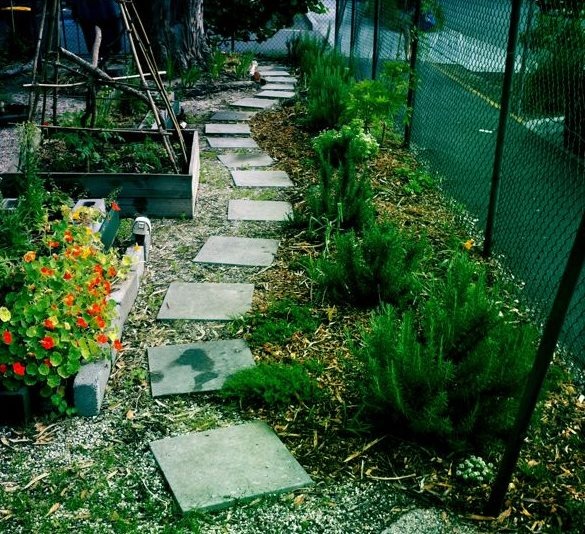 The movement called “guerrilla gardening” has taken off around the world. It is usually gardening on an unused piece of public land to produce food or to add some beauty to a barren area. Frequently carried out at night to avoid detection, it has sometimes been done as a protest against land misuse or neglect. We tell here a story of turning a piece of private land into a vibrant, productive garden with permission of the owner.Read more
The movement called “guerrilla gardening” has taken off around the world. It is usually gardening on an unused piece of public land to produce food or to add some beauty to a barren area. Frequently carried out at night to avoid detection, it has sometimes been done as a protest against land misuse or neglect. We tell here a story of turning a piece of private land into a vibrant, productive garden with permission of the owner.Read more

